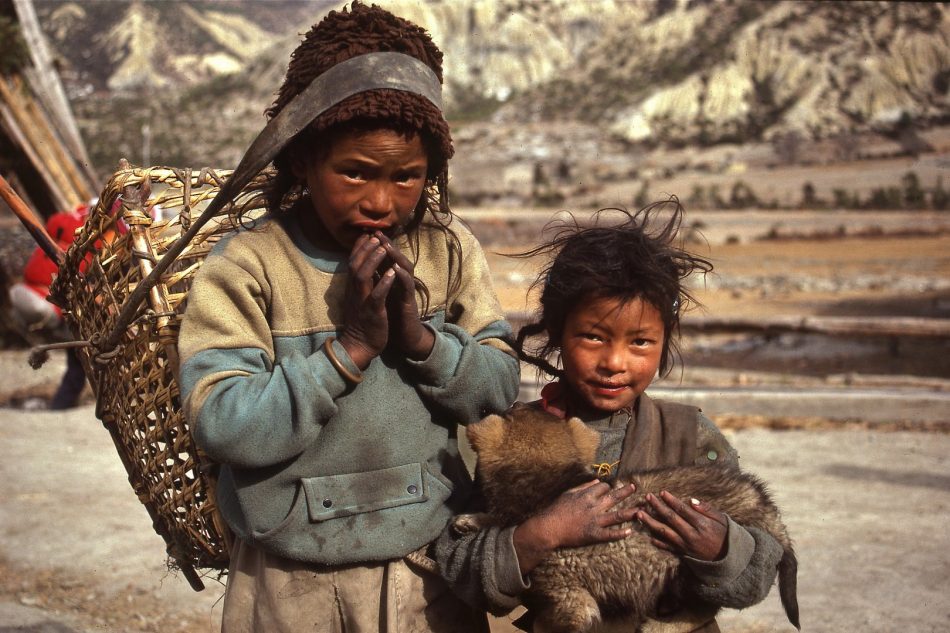
Page Description
Explore the realities of abject poverty:
its causes, impacts, and the struggle for relief
faced by those in extreme economic hardship.
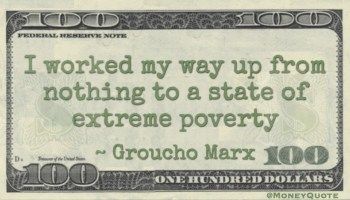
Poverty: the condition of being extremely poor:
Two million people in the city live in abject (= very great) poverty.
He emigrated to Australia to escape the grinding (= very great) poverty of his birthplace.
Helping to alleviate poverty in developing countries also helps to reduce environmental destruction.
Cambridge Dictionary
While activities and materials are quite normal in our everyday lives, there are many people whose worries have nothing to do with technology and coffee.
In fact for a baffling number of people all over the world, finding the necessities to live is an everyday struggle.
Imagine living somewhere where scavenging for the tiniest bit of food and searching for a soft place to lay your head at night is the norm.
Imagine living in the poorest conditions, known as abject poverty.
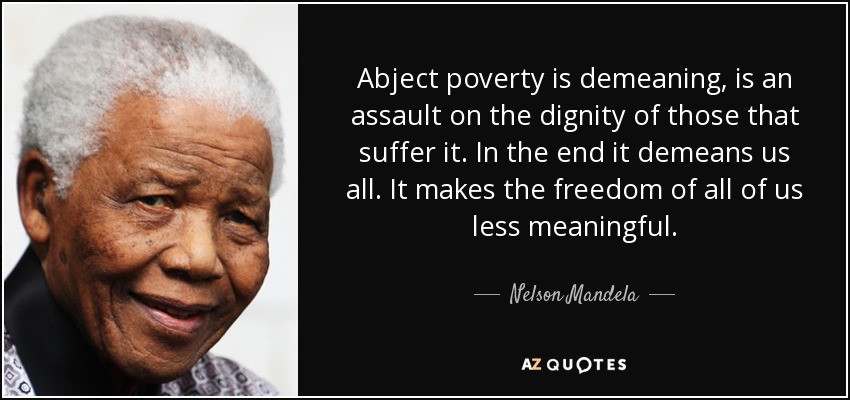
Abject is the lowest extreme imaginable and is associated with misery and humiliation.
Therefore, abject poverty is the lowest, most hopeless form of poverty that exists.
This often means looking for food in less than desirable conditions such as in garbage cans or sleeping on park benches or in cardboard boxes.
Those in abject poverty often lack access to things that many of us take for granted such as schools electricity and clean water.
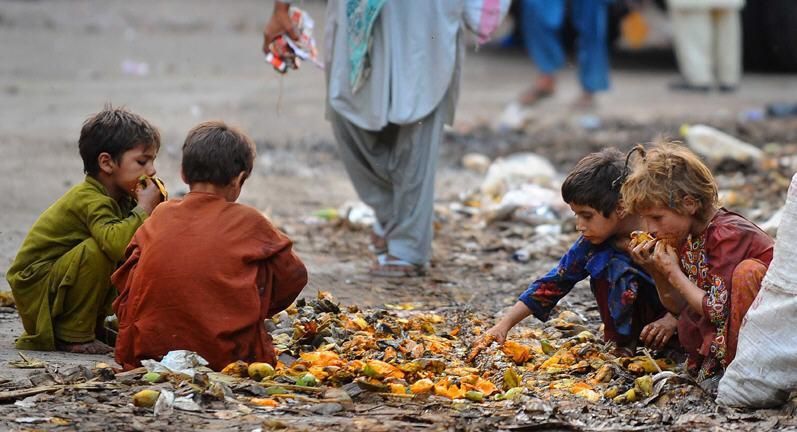
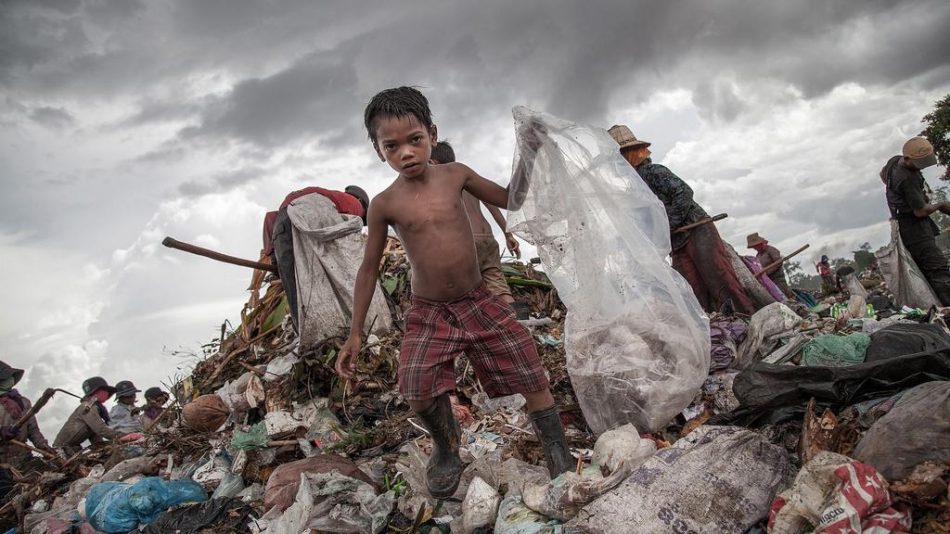
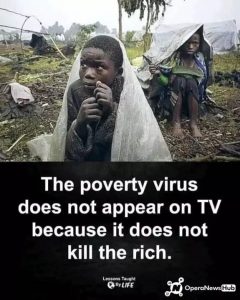

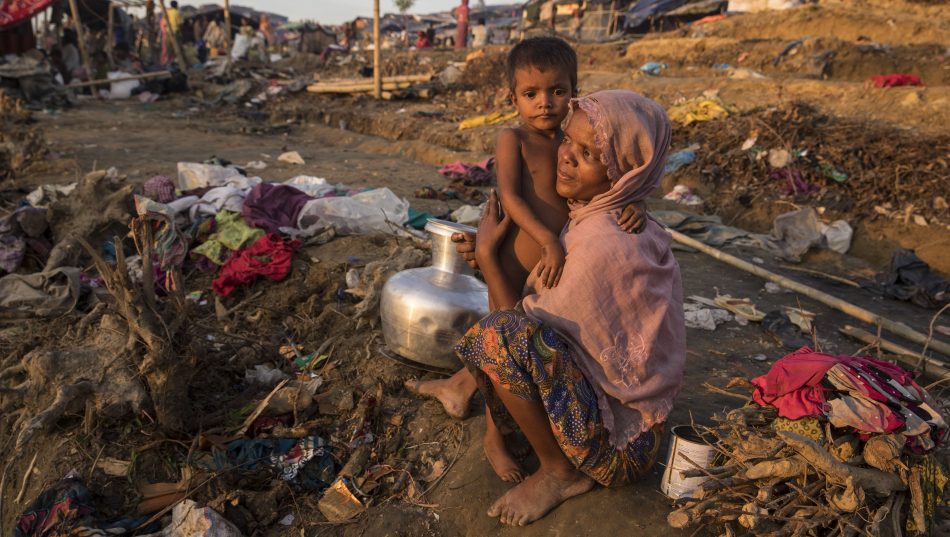
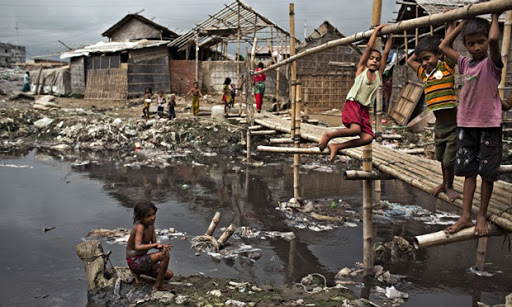
4 Documentaire – Madagascar – Association: «Les enfants du soleil» – Part 1
9 aug. 2011
5 – 4th Largest Island, 5th Poorest Country… MADAGASCAR
9 sep. 2018
6 Madagascar – Extreme poverty
21 jul. 2015
T/I: 10:17:32
The International Monetary Fund sees no immediate prospect of helping to put the poverty-stricken island nation of Madagascar on the road to recovery because its government won’t open up its finances to outside inspection. Its people face a further decline in their standard of living. Already Madagascar is one of the world’s poorest countries, 75 per cent of its people surviving on less than a dollar a day, lucky to
get one small meal as price rises take even the staple food of rice beyond their means. In the slums of the capital Antananarive, there is no clean water and no sewage system. Picking over refuse is often the only employment. Families are forced to live together – three to five
families in a house – because they cannot afford to rent their own.
Madagascar’s economic decline since independence has seen average income cut in half in recent years. Corruption and government in-fighting makes the future look even bleaker.
SHOWS:
ANTANANARIVO, MADAGASCAR RECENT:
MS dirty water, tilt up to poverty stricken village;
VS poor people in shacks;
VS people picking rubbish;
WS man shoveling charcoal;
VS food stalls;
SOT Lovy Rasolofomanana, Malagasy Charity Worker: “Since 1991 the price of rice has risen from 600 Malagasy Francs to 2000 – about fifty cents. People can’t afford it. Families are forced to live together – three to five families in a house. Rent is very expensive and the minimum wage has not increased.”;
VS charity clinic, mothers holding babies;
VS street school;
SOT Frances Turner, United Nations Children’s Fund: “The net enrolment is now around 50 per cent. This means of the half million children who’re born in Madagascar each year – only 250 thousand of them will go to school and get the rudiments of an education. but it’s not just the question of access – there are problems of staying in school of drop out – and ultimately only one in five children which starts the five
years primary cycle completes it.”;
CU man holding baby;
MS man with baby;
MS man pulls rickshaw;
VS poverty;
SOT Prosper Youm, International Monetary Fund: “It is clear that if there is no ersious programme of debt relief, Madagascar doesn’t start to put some order in its finances in the short term – the result will be further deterioration in the standard of living of the population.”;
VS street scenes;
RUNS 3.20.
You can license this story through AP Archive: http://www.aparchive.com/metadata/you…
Find out more about AP Archive: http://www.aparchive.com/HowWeWork
7 Bolivian Shoeshiners Live in an Endless Cycle of Poverty
11 okt. 2016
8 A Life in Extreme Poverty
9 What Is It Like To Grow Up In A Slum | Early Life | Real Families
17 dec. 2019
10 A Tale of Two Slums: Tackling Poverty in South Africa
17 feb. 2017
IMPORTANT CONTENT
11 Men of Burden – Acclaimed Documentary Film on Cycle Rickshaws in Pondicherry, India
4 aug. 2014
“Men of Burden: Pedaling towards a Horizon” is an Internationally-acclaimed 2006 documentary film set in the city of Pondicherry(now Puducherry), India. The documentary uncovers the story of disappearing cycle rickshaw drivers living in abject poverty. Over time, the city has experienced a gradual reduction in the number of cycle rickshaws. thereby diminishing the chances of living for those who depend on them. What used to be one of the primary modes of transport in the city is now a fading memory with the few remaining ones staging a difficult survival. The film explores some of the ethical dimensions of man pulling man against the background of the increasingly menacing effects of motorised transport and air pollution. It also takes the viewer through the rickshaw men’s journey of hope on the roads that have fostered them.
Representing one facet of India’s population below poverty line, these unflagging men perpetually struggle to eat one satisfying meal a day. What is remarkable is the essence of some who believe in making a difference in an apparently hopeless livelihood. While India’s big cities are racing towards Globalization and technology, these rickshaw men, against all odds, remain appreciative of their modest lives by believing in the power of now meaning earn for their everyday meal and live a contented life and not worry about any saving or about future.
Portraying the immediacy and desolation of the situation the film highlights a catalytic change revolutionizing India’s economic and social future from the grass roots level. Juxtaposing the way of life of these men with definitive solutions, the film answers the question of how these changes can trickle down to the roots of India’s soil.
The film had its world premiere at the Los Angeles Indian Film Festival, European Premiere at the Filmburo Baden-Wurttemberg’s Bollywood and Beyond Film Festival and its NYC Premiere at the Sixth Annual Indo-American Arts Council Film Festival.
Directed by Raghu Jeganathan
Co-directed by Earthling K
Produced by Ramesh Mourthy, Accessible Horizon Films
Cinematography by Mohandass
Music by Steve Gorn
12 India’s ragpickers – the harsh reality
9 nov. 2014
13 Ragpickers: Scavengers of a different Graveyard 2005
27 okt. 2011
It is estimated that in Bombay, there are 85,000 Ragpickers (the name by which garbage collectors are popularly known in india).This highly independant and industrious lot also ekes out a living by sorting out and selling a large part of the city’s increasing load of waste(nearlyn8,000 tons per day).
What is their world like? What draws them to an unromantic workplace like various dumping centers and garbage bins around the city? What is the gap between their dreams and their reality? WHat do they feel about the world which offers them only rubbish?How do they grapple with their problems that range from bringing home money for the next meal to running an errant household to pitching small dreams for their children?
The film, RAGPICKERS, scavengers of a different graveyard, attempts to explore this world of theirs and create a sensitive potrayal of a group of people who rarely move away from the fringe.Yet, they live a brave life, seldom compromising on their inherent dignity.
14 Chintan | Ripple India
25 aug. 2012
15 – 2 Days in SLUMS OF MUMBAI | Dharavi, India
7 jul. 2016
16 Indian rag picker girl sharing her life on-camera
27 aug. 2012
For every hundred residents of Delhi, there is one person engaged in recycling.
And among them are mostly underage kids. It is really ironical that the worst forms of child labour prevail in Delhi in a very high magnitude. At least half a million children are working in full-time jobs here. Mostly they are trafficked from their native villages. Some accompany their migrant worker parents and they live in slums. Rag-picking has been brought under the definition of a hazardous industry, but despite that 50,000 children are rag-pickers. None of the work children do is voluntary, if the child is below 18. Rag- pickers go to work due to some compulsion. There are layers of middlemen who profit from the child’s labour. It is forced labour under the legal definition. Trafficked children are held in bondage and ill-treated. You go to Kalka Mandir, Hanuman Mandir or Jama Masjid, you will find disabled children begging. More often the kids are mutilated.This is Delhi’s slumdog reality.
The Yamuna, also known as Jamuna or Jumna, is the largest tributary river of the Ganges in northern India. Originating from the Yamunotri Glacier at a height of 6,387 metres on the south western slopes of Banderpooch peaks in the Lower Himalayas in Uttarakhand, it travels a total length of 1,376 kilometers and has a drainage system of 366,223 km2, 40.2% of the entire Ganges Basin, before merging with the Ganges at Triveni Sangam, Allahabad, the site for the Kumbha Mela every twelve years.It crosses several northern states as India which is why nearly 57 million people depend on the Yamuna waters. With an annual flow of about 10,000 cubic billion metres and usage of 4,400 cubic billion metres, the river accounts for more than 70 per cent of Delhi’s water supplies.
Just like the Ganges, the Yamuna too is highly valued in Hinduism and worshipped as goddess Yamuna, throughout its course. In Hindu mythology, she is the daughter of Sun God, Surya, and sister of Yama, the God of Death, hence also known as Yami and according to popular legends, bathing in its sacred waters frees one from the torments of death.
The water of Yamuna is rendered safe through its course from Yamunotri in the Himalayas to Wazirabad in Delhi, about 375 km. However, the discharge of wastewater through 15 drains between Wazirabad barrage and Okhla barrage Wazirabad in Delhi is severely polluted. In 1909 the waters of the Yamuna were distinguishable as “clear blue”, as compared to the silt-laden yellow of the Ganges. However, due to high-density population growth and rapid industrialization today Yamuna is one of the most polluted rivers in the world, especially around New Delhi, the capital of India, which dumps about 58% of its waste into the river. One official describes the river as a “sewage drain” with biochemical oxygen demand (BOD) values ranging from 14 to 28 mg/l and high coliform content.
The main sources of pollution in the river are households & municipal disposal sites, soil erosion resulting from deforestation occurring to make way for agriculture along with resulting chemical wash-off from fertilizers, herbicides, and pesticides and run-off from commercial activity and industrial sites.
Source: Wikipedia
This footage is part of the professionally-shot broadcast stock footage archive of Wilderness Films India Ltd., the largest collection of imagery from South Asia. The Wilderness Films India collection comprises of thousands of hours of high quality broadcast imagery, mostly shot on HDCAM 1080i High Definition, HDV and XDCAM. Write to us for licensing this footage on a broadcast format, for use in your production! We are happy to be commissioned to film for you or else provide you with broadcast crewing and production solutions across South Asia. We pride ourselves in bringing the best of India and South Asia to the world… Reach us at wfi @ vsnl.com and admin@wildfilmsindia.com
17 Health In Slums: Project Exhale, Bangalore – India (UK version)
10 mrt. 2015
IMPORTANT CONTENT
18 – 25 Sobering Statistics On Global Poverty That Might Upset You
24 dec. 2013
Alpha Paw
Everyone knows there is poverty in the world. But what exactly does that mean? These are 25 sobering statistics on global poverty that might upset you.
https://twitter.com/list25
https://www.facebook.com/list25
http://list25.com
Check out the text version too! – http://list25.com/25-sobering-statist…
Here’s a preview:
At least 80% of humanity lives on less than $10 per day
To put things into perspective, the top 20% of the world’s population accounts for three quarters of the world’s income
Half of the world’s population accounts for only 5% of the world’s income
According to UNICEF, 22,000 children die every day due to poverty
Nearly one third of children in developing countries are estimated to be underweight or stunted
Last year, about 70 million children of primary school age were not in school
Nearly a billion people celebrated the coming of the 21st century without being able to read a book or sign their name
Preventable diseases like Malaria afflict nearly 500 million people every year
Africa alone accounts for roughly 1 million deaths due to Malaria annually. Most of them are children
Speaking of children, there are 2.2 billion children in the world.
Half of them live in extreme poverty
Over 1 billion people have inadequate access to water and 2.6 billion lack basic sanitation. Many times this means no separation of drinking water and toilet water.
That is why 1.8 million children die every year of diarrhoea
Approximately half of the world’s population now lives in cities and about one third of those in the cities live in slum conditions
In fact, slum growth is outpacing urban growth by a frighteningly large margin
One quarter of humanity lives without electricity
The 7 richest people in the world make more than the poorest 41 countries combined (roughly 567 million people)
.14% of the world population own over 80% of the world’s private financial wealth. The vast majority of that wealth has managed to avoid all income and estate taxes, either by the countries where it has been invested or where it comes from.
For every $1 in aid that a developing country receives, over $25 is spent on debt repayment.
The poorer the country, the more likely it is that the debt repayments are being extracted directly from the people who neither contracted the loans nor received any money
In 1998 $8 billion dollars was spent on cosmetics in the United States, $11 billion was spent on ice cream in the European Union, $17 billion was spent on pet food in Europe and the US, $100 billion was spent on alcohol in Europe, $400 billion was spent on narcotics globally, and $780 billion was spent on militaries around the world.
In the same year $6 billion was spent on achieving basic education for all, $9 billion was spent on basic water and sanitation for all, and $13 billion was spent on basic health and nutrition for all
If you are reading this list then you are in the top 30% of the world’s population when it comes to poverty and wealth
With new technologies we now grow enough food to feed 10 billion people or 1.5 times the world population. The problem is that most of the world can’t afford to buy that food.
If the world spent less than 1% of what it spends on weapons all the previously mentioned issues would be fixed
19 – Sevenly + Food for the Poor
10 feb. 2014
wearesevenly
http://www.sevenly.org/
Meet Juan and Maria. Juan and Maria live in Guatemala with their mom and infant brother, Hugo. Just over a year ago, their father died in a road accident, leaving Juan and Maria’s mother to support all three children. Jobless, and without someone to help care for them, they now hike for more than 4 hours a day to the city dump in search of rotten food. Somedays they eat. Other days they don’t. Sometimes what little food they find makes them ill because it is rotten. No mother should be forced to raise her kids this way and no child should be forced to rummage through fifth and garbage to find food.
This week, we are partnering with Food for the Poor to feed starving children in Guatemala. Each purchase provides meals for one child for two months, meaning the difference between life and death.
IMPORTANT CONTENT
Must be seen
20 – Top 10 Poorest countries 2017
23 mei 2015
Top 10 Poorest Countries in World 2015 . The country can be said as poorest in the world as they have low per capita income, face poverty and low technological development. These countries will not have surplus resources to feed their population. People are living in the situation of hungry for food. There is less growth, unemployment and scare resources which made these countries as poorest. Poverty in Africa and Poverty in India , there is alot difference , India is a developing country where as Africa is underdeveloped country . People are the supporters of world richest countries rather than poorest Countries . so we should take step to fight against the cause of poverty and deal with hunger stricken people . Watch this video To see the difference between Richest Country and Poorest Country .
=====================================================
Here is the list of which are considered to be the world’s poorest countries today.
1 Democratic Republic of the Congo GDP $394.25
2 Zimbabwe GDP $589.46
3 Burundi GDP $648.58
4 Libera GDP $716.04
5 Eritres GDP $792.13
6 Central African Republic GDP $827.93
7 Niger GDP $853.43
8 Malawi GDP $893.84
9 Madagascar GDP $972.07
10 Afghanistan GDP $1,072.19
SOURCE : http://www.therichest.com
=====================================================
Channel Link : ||TOP10LIST|| https://goo.gl/ueAgqC
Also Watch :- 10 Richest Teenagers: https://youtu.be/ecPVscJylIQ
10 Richest WWE Wrestles :-https://youtu.be/oeoP50z7VMI
21 Living in extreme poverty
31 okt. 2018
22 Smells of success
16 nov. 2016
23 Dog Escape Prank
